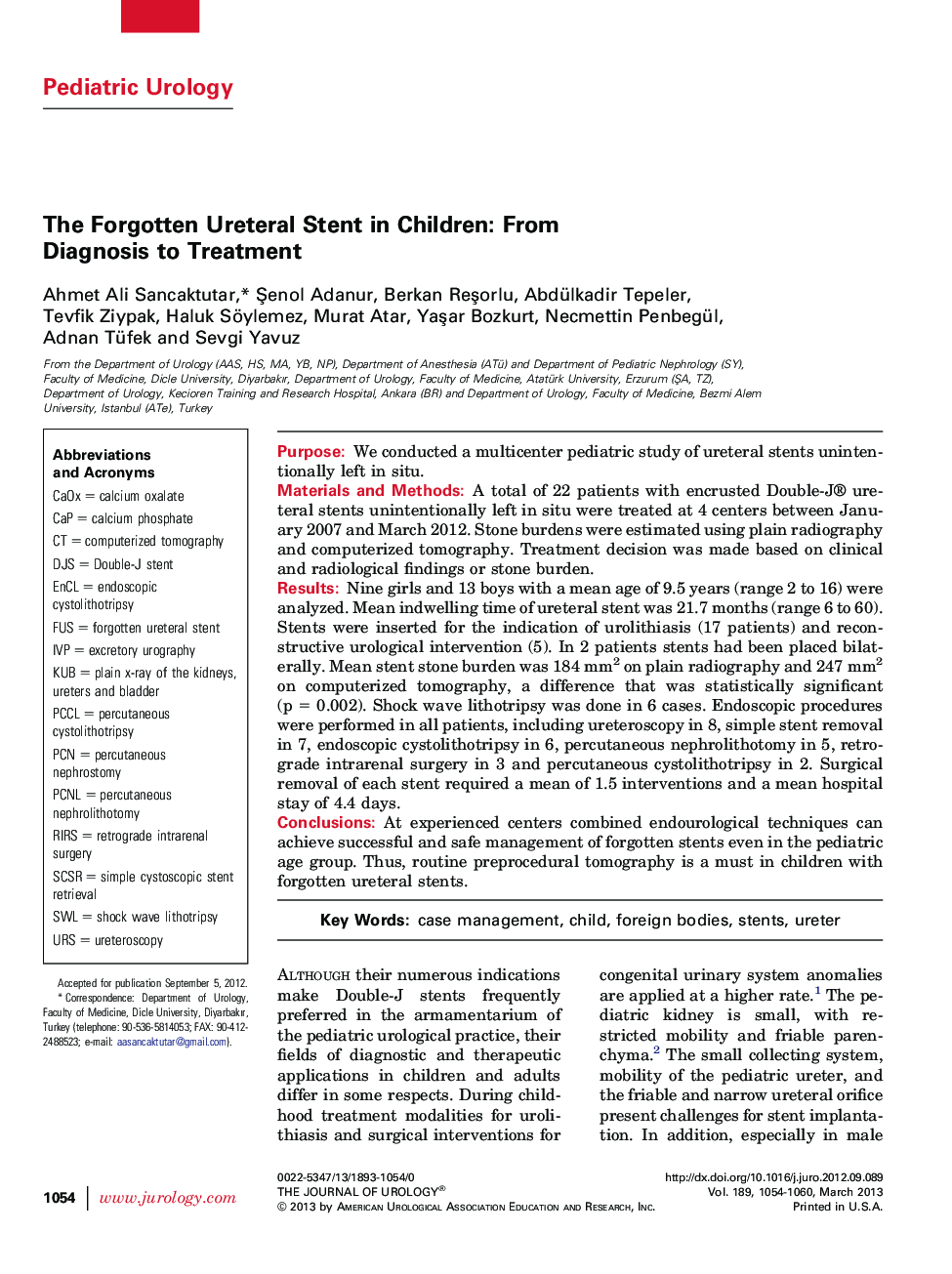| Article ID | Journal | Published Year | Pages | File Type |
|---|---|---|---|---|
| 3864972 | The Journal of Urology | 2013 | 7 Pages |
PurposeWe conducted a multicenter pediatric study of ureteral stents unintentionally left in situ.Materials and MethodsA total of 22 patients with encrusted Double-J® ureteral stents unintentionally left in situ were treated at 4 centers between January 2007 and March 2012. Stone burdens were estimated using plain radiography and computerized tomography. Treatment decision was made based on clinical and radiological findings or stone burden.ResultsNine girls and 13 boys with a mean age of 9.5 years (range 2 to 16) were analyzed. Mean indwelling time of ureteral stent was 21.7 months (range 6 to 60). Stents were inserted for the indication of urolithiasis (17 patients) and reconstructive urological intervention (5). In 2 patients stents had been placed bilaterally. Mean stent stone burden was 184 mm2 on plain radiography and 247 mm2 on computerized tomography, a difference that was statistically significant (p = 0.002). Shock wave lithotripsy was done in 6 cases. Endoscopic procedures were performed in all patients, including ureteroscopy in 8, simple stent removal in 7, endoscopic cystolithotripsy in 6, percutaneous nephrolithotomy in 5, retrograde intrarenal surgery in 3 and percutaneous cystolithotripsy in 2. Surgical removal of each stent required a mean of 1.5 interventions and a mean hospital stay of 4.4 days.ConclusionsAt experienced centers combined endourological techniques can achieve successful and safe management of forgotten stents even in the pediatric age group. Thus, routine preprocedural tomography is a must in children with forgotten ureteral stents.
